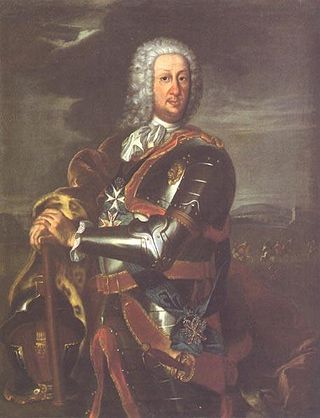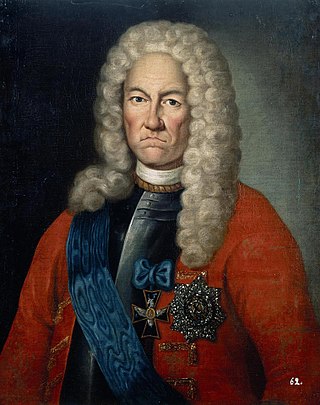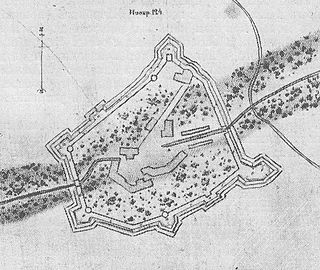| |||||
| Decades: | |||||
|---|---|---|---|---|---|
| See also: | |||||

Events from the year 1701 in Russia
| |||||
| Decades: | |||||
|---|---|---|---|---|---|
| See also: | |||||

Events from the year 1701 in Russia
| | This section needs expansion. You can help by adding to it. (October 2015) |
| | This section needs expansion. You can help by adding to it. (October 2015) |
| | This section needs expansion. You can help by adding to it. (October 2015) |

The 18th century lasted from 1 January 1701 to 31 December 1800 (MDCCC). During the 18th century, elements of Enlightenment thinking culminated in the American, French, and Haitian Revolutions. During the century, slave trading and human trafficking expanded across the shores of the Atlantic, while declining in Russia, China, and Korea. Revolutions began to challenge the legitimacy of monarchical and aristocratic power structures, including the structures and beliefs that supported slavery. The Industrial Revolution began during mid-century, leading to radical changes in human society and the environment. The European colonization of the Americas and other parts of the world intensified and associated mass migrations of people grew in size as part of the Age of Sail.

The Great Northern War (1700–1721) was a conflict in which a coalition led by the Tsardom of Russia successfully contested the supremacy of the Swedish Empire in Northern, Central and Eastern Europe. The initial leaders of the anti-Swedish alliance were Peter I of Russia, Frederick IV of Denmark–Norway and Augustus II the Strong of Saxony–Poland–Lithuania. Frederick IV and Augustus II were defeated by Sweden, under Charles XII, and forced out of the alliance in 1700 and 1706 respectively, but rejoined it in 1709 after the defeat of Charles XII at the Battle of Poltava. George I of Great Britain and the Electorate of Hanover joined the coalition in 1714 for Hanover and in 1717 for Britain, and Frederick William I of Brandenburg-Prussia joined it in 1715.

The Battle of Narva on 30 November [O.S. 19 November] 1700 was an early battle in the Great Northern War. A Swedish relief army under Charles XII of Sweden defeated a Russian siege force three to four times its size. Previously, Charles XII had forced Denmark–Norway to sign the Treaty of Travendal. Narva was not followed by further advances of the Swedish army into Russia; instead, Charles XII turned southward to expel August the Strong from Livonia and Poland-Lithuania. Tsar Peter the Great of Russia took Narva in a second battle in 1704.

Events from the year 1701 in Canada.

Count Boris Petrovich Sheremetev was an Imperial Russian diplomat and general field marshal during the Great Northern War. He became the first Russian count in 1706. His children included Pyotr Sheremetev and Natalia Sheremeteva.

Joachim von Rohr was a lieutenant colonel for the Swedish Empire and Commandant of the Dalarö fortress. He participated in the Battle of Poltava and was captured and held as a prisoner of war in Solikamsk in Russia.
Wolmar Anton von Schlippenbach (1653–1721) was Governor General of Swedish Estonia from 1704 to 1706.

Count James Daniel Bruce was a Russian general, statesman, diplomat and scientist of Scottish descent, one of the chief associates of Peter the Great. According to his own record, his ancestors had lived in Russia since 1647. He was the younger brother of Robert Bruce, the first High Commandant of Saint Petersburg.

Danylo Apostol (1654–1734), was a Hetman of Zaporizhian Host from 1727 to 1734.

A naval ensign is an ensign used by naval ships of various countries to denote their nationality. It can be the same or different from a country's civil ensign or state ensign.

The Battle of Erastfer took place on 29 December 1701 (O.S.) / 30 December 1701 / 9 January / 1702 (N.S.) near Erastfer in eastern Swedish Livonia between a Russian force of around 13,000 regulars along with 6,000 irregulars led by general Boris Sheremetev and a Swedish force of about 3,470 men, under the command of Wolmar Anton von Schlippenbach. The Swedes were defeated, with a loss of 1,000 men killed and captured along with all their artillery pieces. The Russians sustained about 1,000 killed along with another 2,000 wounded.
Erastvere is a village in Kanepi Parish, Põlva County in southeastern Estonia. It is located just southeast of Kanepi, the centre of the municipality, and is passed by the Tallinn–Tartu–Võru–Luhamaa road (E263). As of 2011 Census, the village's population was 286.
Magari is a village in Kanepi Parish, Põlva County in southeastern Estonia. It's located about 4.5 km southeast of Kanepi, the administrative centre of the municipality, neighbouring the Erastvere, Põlgaste, Soodoma and Lauri villages. As of 2011 Census, the village's population was 57.

The Battle of Kletsk took place on 30 April 1706, in- and outside the city of Kletsk, Belarus during Charles XII's Polish campaign of 1701–1706, in the Great Northern War. The Swedish forces were led by Carl Gustaf Creutz who defeated a larger Russian–Cossack force under the command of Semjon Nepljujev and Danylo Apostol. Many of the Russian and Cossack regiments participating in the battle were wiped out and ceased to exist as fighting units.
The Battle of Rauge was a battle that took place on 15 September 1701 near Rõuge, Livonia during the Great Northern War in which the Swedes defeated the numerically superior Russians.
Kosmos 1701 is a Soviet US-K missile early warning satellite which was launched in 1985 as part of the Soviet military's Oko programme. The satellite is designed to identify missile launches using optical telescopes and infrared sensors.

The Battle of Petschora took place on February 23, 1701 near the village of Pechory, Russia during the second year of the Great Northern War. The Swedish army of about 2,100 men assisted by approximately 2,000 peasants under the command of Jacob Spens defeated a Russian force of about 6,000 men.

Events from the year 1701 in Sweden
The Battle of Varja took place on November 7, 1700 close to at the villages of Varja and Aa, in the Duchy of Estonia of the Swedish Empire during the Estonian campaign of the first year in the Great Northern War.

The Battle of Chelif or Battle of Djidouia took place on 28 April 1701 on the banks of the Chelif River. It was fought between the armies of the Alaouite Sultan Ismail Ibn Sharif and those of the Regency of Algiers commanded by the Bey of Mascara, Mustapha Bouchelaghem. It took place in the context of an attempt by the Alaouites to conquer the west of the Regency of Algiers, coordinated with an offensive by Tunis on the east of the Regency of Algiers in 1700 and 1701.
![]() Media related to 1701 in Russia at Wikimedia Commons
Media related to 1701 in Russia at Wikimedia Commons